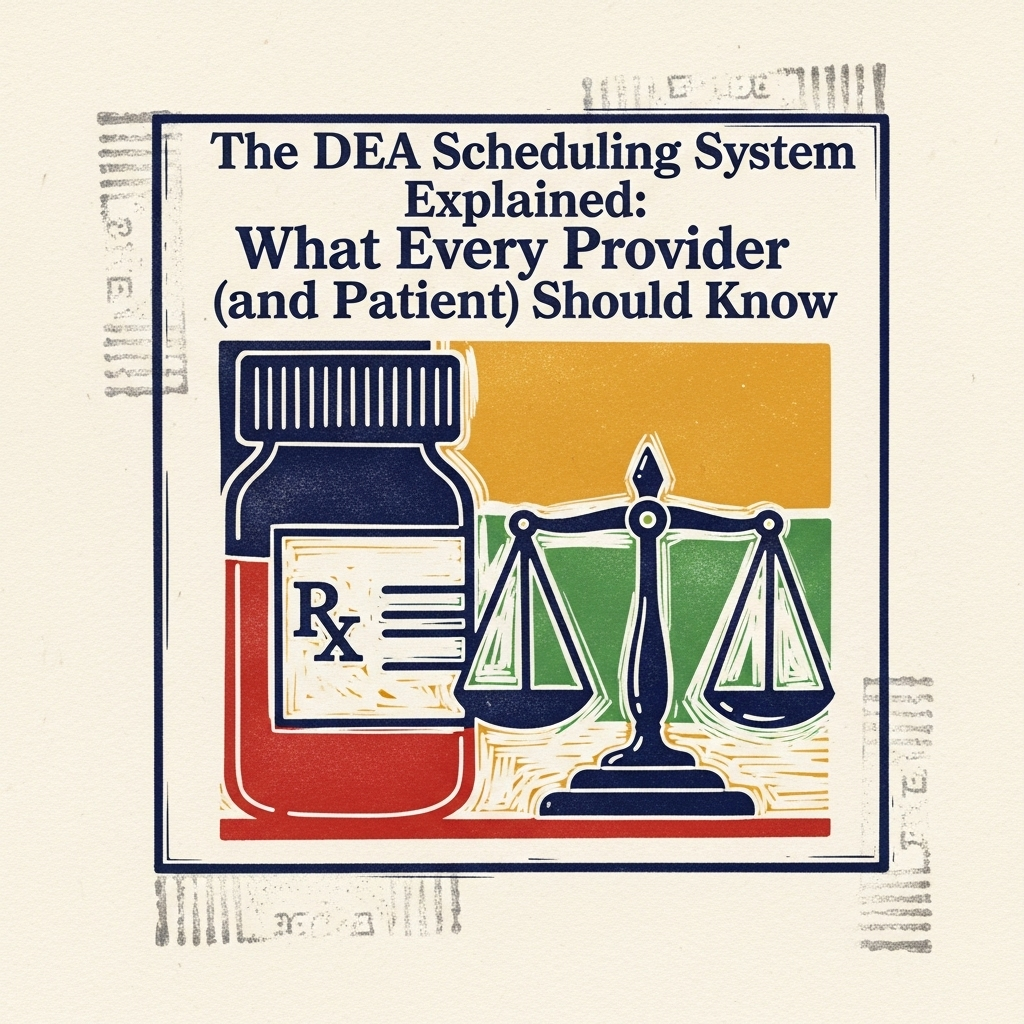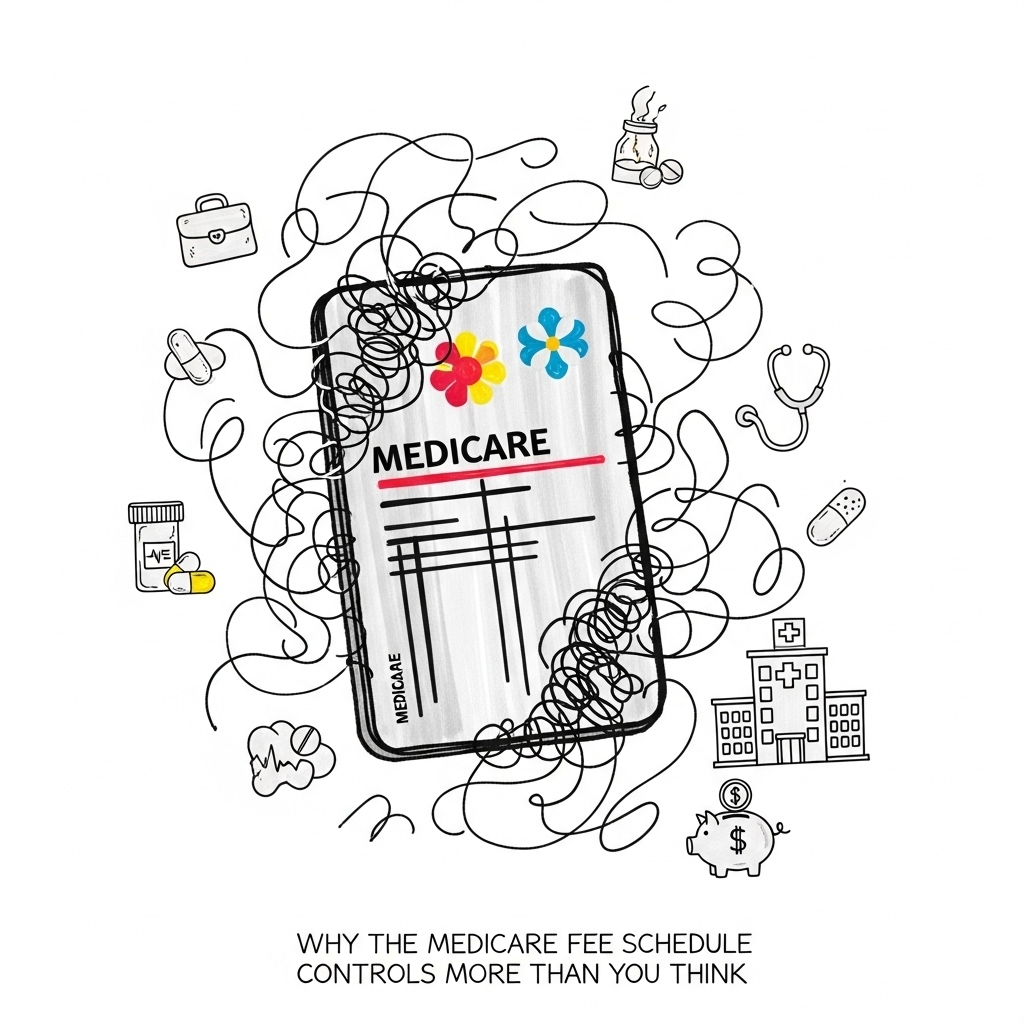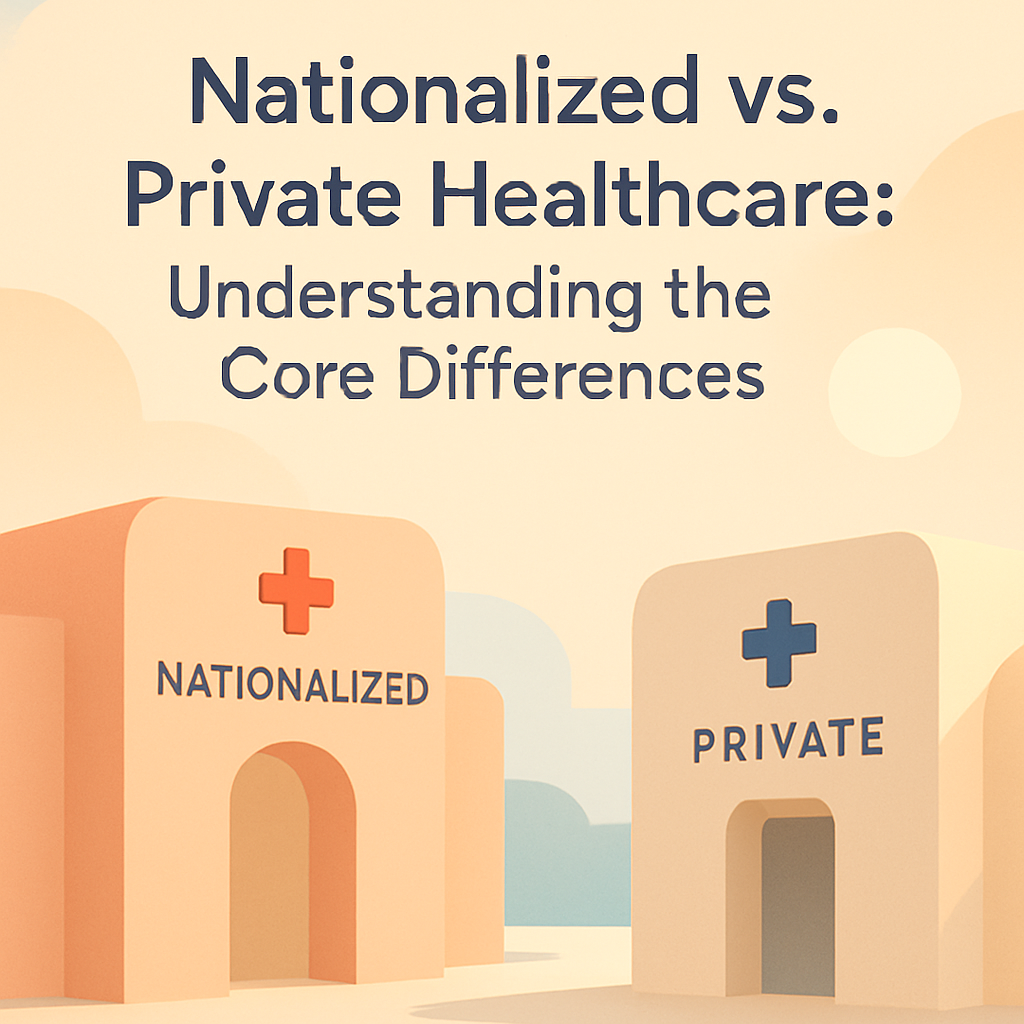
Introduction: The Alphabet Soup of Drug Regulation
If you’ve ever glanced at a prescription and noticed “C-II” or “C-IV” stamped next to the medication name, you’ve seen the shorthand for the DEA scheduling system.
For patients, these codes are a mystery.
For providers, they’re a regulatory landmine.
And for policymakers, they’re a critical tool for controlling the balance between medical need and public safety.
But here’s the problem:
Most people—even many clinicians—don’t fully understand how the scheduling system works, why certain drugs land where they do, and what those categories actually mean in practice.
Let’s break it down clearly—no legal jargon, no scare tactics—just the facts.
The Basics: What Is a Controlled Substance Schedule?
The Controlled Substances Act (CSA), enforced by the Drug Enforcement Administration (DEA), classifies certain medications into five schedules based on three main factors:
- Accepted Medical Use – Does it have legitimate medical value?
- Potential for Abuse – How likely is it to be misused?
- Risk of Dependence – Can it cause physical or psychological dependence?
The higher the schedule number, the lower the abuse potential (in theory) and the fewer restrictions on prescribing.
Schedule I:
No Medical Use, High Abuse Potential
- Examples: Heroin, LSD, Ecstasy, Cannabis (at the federal level)
- Legal Status: Cannot be prescribed; possession is illegal under federal law.
- Provider Impact: Schedule I drugs are essentially off-limits for medical treatment (despite evolving research on some substances, like cannabis and psilocybin).
Schedule II:
High Abuse Potential, Accepted Medical Use
- Examples: Oxycodone, Morphine, Methadone, Fentanyl, Adderall, Ritalin
- Rules:
- No refills allowed—new prescription each time.
- Electronic prescribing or tamper-resistant paper required.
- Storage and documentation requirements are strict.
- No refills allowed—new prescription each time.
- Provider Impact: Heavy monitoring. Even a well-intentioned and correct prescribing pattern can trigger a DEA audit.
Schedule III:
Moderate Abuse Potential
- Examples: Buprenorphine, Anabolic Steroids, Ketamine
- Rules:
- Refills allowed (up to 5 in 6 months).
- Prescription can be called in or faxed (though many states require e-prescribing now).
- Refills allowed (up to 5 in 6 months).
- Provider Impact: Still requires vigilance, but generally fewer barriers than Schedule II.
Schedule IV:
Lower Abuse Potential
- Examples: Xanax (Alprazolam), Valium (Diazepam), Ambien (Zolpidem)
- Rules: Similar to Schedule III for refills, but still tracked in Prescription Monitoring Programs (PMPs).
- Provider Impact: Often overlooked in diversion discussions, but benzodiazepines and sedative-hypnotics carry serious withdrawal risks.
Schedule V:
Lowest Abuse Potential
- Examples: Cough syrups with codeine, Lyrica (Pregabalin)
- Rules: In some states, may be dispensed without a prescription in limited quantities.
- Provider Impact: Often under-monitored—but diversion is still possible.
Why Scheduling Matters for Providers
The schedule dictates:
- How you prescribe (refill limits, e-prescribing requirements)
- How you store the medication in your practice
- How you document the decision to use it
- What red flags might draw DEA attention
A single misstep—failing to check the PMP, overlooking a refill limit, or inadequate chart documentation—can result in penalties ranging from fines to loss of license.
Why Scheduling Matters for Patients
Patients feel the impact in ways they often don’t expect:
- Refills may require a new appointment and prescription
- Sudden policy changes (federal or state) can disrupt ongoing treatment
- Travel with certain medications may trigger security or customs issues
- Stigma increases as the schedule number decreases (especially for Schedule II drugs)
The Limitations of the System
While the DEA scheduling framework is meant to align medical use with abuse risk, it’s not without flaws:
- It can be slow to adapt to new evidence (e.g., cannabis remains Schedule I federally).
- It lumps drugs together that may have vastly different clinical profiles.
- It doesn’t account for patient-level nuance—a medication that’s risky for one patient may be the safest choice for another.
The Provider’s Best Defense: Education + Documentation
Whether you’re prescribing for chronic pain, ADHD, anxiety, or seizure disorders, the rules are clear:
- Know your state’s laws in addition to federal rules
- Document the why behind your prescribing decision
- Incorporate risk mitigation protocols (PMP checks, agreements, urine testing, pill counts)
- Stay informed about DEA updates and scheduling changes
The safest providers are the ones who treat every controlled substance prescription as if it could be reviewed tomorrow—because it could.
Final Thoughts: It’s a Framework, Not a Verdict
The DEA scheduling system is not a moral judgment on medications—it’s a regulatory tool.
It’s there to protect public safety, guide prescribing, and reduce abuse.
But like any tool, it’s only as effective as the people using it.
For providers, that means using it wisely and compliantly.
For patients, it means understanding the rules so you can navigate them without losing access to the care you need.
About the Author
Douglas J. Jorgensen, DO, CPC, FAAO, FACOFP
Dr. Doug is a physician, medical policy advisor, and national consultant on pain management and regulatory compliance. He has trained providers across the country on safe, effective, and compliant prescribing of controlled substances.


